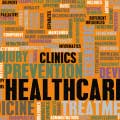
On October 1, enrollment began in the national healthcare program that has been the subject of so much debate in Washington. The website for the program, www.healthcare.gov, was plagued with technical problems at the outset, but as of December 1, most of those seem to be resolved. For those of you waiting to decide whether to enroll in the program here are X things you should know.
1. It’s open to all: US citizens and legal immigrants are eligible to for insurance under the Affordable Care Act of 2010 (ACA). The basic premise of the program is that everyone must be insured or face fines. Medicare participants will stay with Medicare. Federal workers will continue to get coverage through existing programs. Those eligible for Tricare benefits are considered insured and do not have to make changes. Everyone else meeting the eligibility requirements must have insurance by March 31, 2014. Bottom line: if you have existing health coverage through a private healthcare provider or one of those mentioned above, you can keep it. If you don’t have coverage under one of those programs, you can purchase coverage through the Health Insurance Marketplace that is part of the healthcare reform process.
Read Related: Dispelling Myths About Universal Healthcare
2. No one can be refused coverage: Starting in 2014, health insurance plans can’t refuse to cover you, or charge you more, just because you have a pre-existing health condition. There is no rate difference between men and women. There is no minimum hours per week you need to work to qualify and no waiting period other than the start date of January 1, 2014.
3. Preventive care is covered: So are 10 essential health benefits. Preventive services include blood pressure and cholesterol screening. And, particularly important to Hispanics, screening for type 2 diabetes and diet counseling for obese adults is part of the essential service list. Screening for colorectal cancer is covered as is counseling for alcohol abuse. Immunizations for influenza, pneumonia, mumps, measles, and rubella are all covered. Women receive screening for breast cancer (mammography) and cervical cancer. Men receive screening for prostate cancer. Counseling is included for domestic violence and mental health disorders.
4. There’s a wide range of coverage: “Well person exams” are covered under the plan. At a minimum, coverage includes prenatal care, maternity and newborn care. Emergency care and hospital stays including surgery are covered. Outpatient surgical services are covered. Mental health and substance use disorder services, including behavioral health treatment, is covered. Prescription drug coverage and laboratory services are covered. Rehabilitative services and devices (services and devices to help people with injuries, disabilities, or chronic conditions gain or recover physical skills.) is part of the program. Management of chronic diseases is covered as are all pediatric services.
5. Coverage is affordable: Depending on your family size and income, you may get lower costs on monthly premiums and out-of-pocket costs. Subsidies paid directly to the insurance company may be available for lower income families. You may also qualify for free or low-cost coverage from Medicaid or the Children’s Health Insurance Program (CHIP). Many states are expanding Medicaid to cover more people in 2014. Even those currently covered under a private insurance company can shop the exchange for better rates.
6. Dental insurance: Under the new law, dental insurance is treated differently for adults and children under age 18. Dental coverage for children is considered an essential health benefit. This means it must be available to your child as part of a health plan or as a free-standing plan. Insurers don’t have to offer adult dental coverage, but may as a part of the plan. Separate dental plans may be available for adults and a different fee will apply.
7. Enrollment is easy: Open enrollment began on October 1, 2013 and has gotten significantly easier since the site’s glitches were worked out. Open enrollment closes on Dec. 23, 2013, and reopens on Nov. 15, 2014. Coverage begins on January 1, 2014. After that, coverage begins the first of the month after enrollment.
8. The process is streamlined: Begin at Healthcare.gov, the official ACA website. Complete the form describing household size, state of residence, income and citizenship status. You’ll find out if you qualify for a subsidy to help with health insurance costs. Most importantly, you’ll receive a list of health care plans, their coverage, and the premium cost all in an easy to read format. Once you decide on a plan, you’ll be directed online to the plan’s individual website. Based on the application, you’ll be directed to Medicaid if eligible.
9. Help is available: Healthcare.gov is an easy to read, user friendly website. If you need help not provided there, try calling the helpline phone number (800) 318-2596. You can also look to local churches, social agencies and state and local offices, many of which have helplines and staff available. No computer? You can still apply for coverage by phone and mail.
10. Pay attention and get insured: The goal of the ACA is to make affordable health care available for every eligible person. Failure to have health care can cost you. After March 31, 2014 those not insured will be penalized at $95.00 for the first year with the penalty rising each year they remain uninsured.
Beware of scams: Healthcare.gov is the only official website for information about the ACA. Anyone can apply for coverage, you do not have to be a licensed insurance agent or salesperson. Fraudulent organizations will sprout like flowers in the spring. Go to the official website to answer questions or report incidents of fraud.












